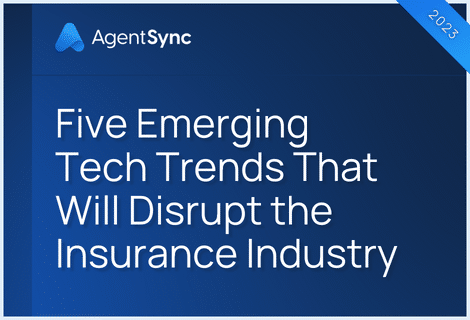

Between the COVID-19 pandemic, cybersecurity threats, increasingly frequent catastrophic disasters, and the looming threat of an economic recession, the insurance industry has faced more than its fair share of changes and challenges the last few years. These new and ever-evolving threats have prompted a technological acceleration in the industry, forcing insurance carriers and agencies to rapidly adopt new technology, explore new business models, and respond to consumer demands.
Despite the tough times, a report from Accenture predicts that the industry is still on a major growth trajectory. But, the report cautions, not without continued innovation like new products, new services, and new revenue streams.
Another area that’s too important to overlook is your people. By renewing their focus on the people who make the industry run, insurance industry leaders can play a vital role in creating a culture of innovation and resilience to help mitigate future challenges.
Insurance organizations can do this by focusing their efforts on leveraging technology. While insurance carriers, agencies, and MGAs/MGUs might jump immediately to the benefits of insurtech, the investment in HR technology is just as important to achieving your organziation’s goals. Combined, the right insurtech and the right HR technology can equip insurance businesses to find and keep the workforce they need. We’ll explore how to do just that, using a fully integrated partnership between producer compliance management and background check technologies.
Technology and the Insurance Industry
As the insurance industry becomes more digitized with each passing year, it can be easy for insurance agencies, carriers, and MGAs/MGUs to focus solely on their core insurtech stack. Things like agency management systems, customer relationship management systems, automated email and text messaging platforms, client portals, and so on. Investing in these systems absolutely brings these insurance organizations into the 21st century and improves the customer experience.
What you may not think of, however, is the important role HR technology plays in creating a resilient and dynamic workforce and culture. Here are some of the benefits of modern people management technology:
Minimize Risk + Maintain Compliance
Not only does the insurance industry deal with sensitive, personal information that requires strong protection; it also exists within a strict compliance landscape.
Modern people management technology platforms are designed with security and compliance management in mind. These features and capabilities can include:
- Role and permission-based frameworks
- Communication and sharing tools
- Periodic assessments
- Updates on regulatory requirements
- And more
Boost Efficiency + Productivity
Insurtechs like AgentSync can help streamline and automate producer lifecycle management from onboarding to termination. This kind of solution removes tedious and manual tasks from employees’ plates, freeing up their time to work on higher-value and revenue-generating work.
Similarly, other tools can automate payroll and benefits, manage online employee training, improve your recruitment and hiring, and more. For example, a platform with time-tracking software can show insights into how time is allocated and point out inefficiencies or areas for improvement.
Improve Employee Engagement + Experience
Attracting and retaining talent in the insurance sector is challenging as candidates often lean towards roles in banking, fintech, and cybersecurity. That’s why employee engagement is essential to your insurance organization’s success. Modern HR software can boost employee engagement and foster a better employee experience by:
- Connecting with employees
- Aligning employee goals with company values and vision
- Promoting peer engagement and collaboration
- Ensuring compensation and benefits equity
- And more
Understanding the Costs of Technology
While new tech does cost money, implementing the right technology can help your organization reduce business costs in the long run. The average cost of hiring a new employee alone is around $4,000.You also have to consider the risk of hiring the wrong fit, compliance costs, and everything in between. The right insurtech can be a strategic investment for reducing hiring costs, maintaining compliance, and improving organizational efficiency.
Modern tools help reduce costs by automating manual tasks and processes, reducing errors, and increasing productivity.
It’s not uncommon to think implementing insurtech is expensive, and the benefits don’t outweigh the costs. In reality, the cost of sticking with slow manual processes and not investing in the right technology for your organization is exponentially more expensive. Let’s explore the risks of not digitizing your processes:
- Reduced productivity — Digital transformation improves efficiency by fostering better communication and collaboration. Without the right tools to support your workforce, efficiency and productivity will suffer.
- Loss of top talent — As new generations enter the workforce, organizations must adapt. Outdated recruiting and hiring processes are no longer adequate for attracting and retaining top talent, and neither are outdated systems once you’ve got your people working.
- Lower cost savings — Legacy infrastructure can be difficult to scale and maintain, while modern solutions help save on infrastructure costs. For example, migrating to a cloud environment reduces maintenance server costs to let you scale your environment to meet your business needs.
Before investing in tools and technology, understanding your business costs and ROI is key. An ROI analysis should look at the financial value of an investment in technology and weigh the costs and benefits.
How to Maximize Your Technology Investments
As an HR or IT leader in the insurance industry, it’s essential to understand how to maximize your technology investments to achieve your business goals and optimize efficiency. Here are four ways you can start maximizing your insurtech investments:
1. Leverage Data
Technology can provide valuable insight into multiple aspects of your business, including employee behavior, productivity, engagement, and efficiency. Here are a few ways to leverage HR data and analytics:
- Understand diversity, equity, and inclusion
- Enhance the employee journey
- Identify where/how employees are struggling
- Reduce turnover
- Find the right candidates for your organization
By leveraging these insights, you can make more informed decisions to help improve performance, reduce costs, and improve employee satisfaction and engagement. Consider investing in tools and technology with robust reporting and analytics features.
2. Drive Internal Tech Adoption
Investing in the right technology is one thing, but fully taking advantage of those tools is another. To use your tools and technology to the fullest, it’s essential to drive internal adoption. Many features and functionalities go untouched because employees lack awareness or proper training of the tools. To drive internal tech adoption, ensure employees not only understand why this technology is being used, but that they also have proper training and knowledge of its functionality.
The other half of this puzzle is selecting technology that provides a positive user experience. Since your employees are the people using this technology daily, it’s important that it’s intuitive and user-friendly. This will help drive internal adoption throughout the entire organization.
3. Choose the Right Tech Partners
Your organization is unique and has specific needs and goals that your technology partners should align with. The best way to validate that software will meet your needs is to have clearly defined and prioritized requirements. You can do this through conducting an internal needs analysis that includes:
- SWOT analysis
- Interviews with key stakeholders
- Current technology assessment
- Budget planning
- Readiness assessment
Each software and solution has its own set of key requirements that you’ll need to evaluate when you’re making a decision. Be sure to ask specific questions that relate to your unique use cases to potential technology partners and vendors.
4. Integrate Your Tech Stack
Innovative technology is most effective when properly integrated into your broader tech stack. A properly integrated tech stack can wield countless benefits. Here are some of the advantages of integrating your tech stack:
- Enhance efficiency and productivity
- Streamline workflows
- Improve candidate and employee experience
- Make more informed decisions with comprehensive data
- Mitigate risks and maintain compliance
Integration tends to be a point of frustration for many companies trying to invest in new technology, but it doesn’t have to be. The right technology partners will have the tools and processes in place to best suit your organization’s integration needs. For example, integrating background screening into your chosen insurtech stack or software can help provide a smooth onboarding process by removing manual processes.
AgentSync and Verified First for Insurance Agencies, Carriers, and MGAs
Technology can help insurance industry organizations streamline operations, improve efficiency and productivity, and maintain compliance. Without a modern solution, manual processes can take over – costing your organization time, money, and potential compliance errors. Not only is it essential to make the right technology investments, but to maximize those investments to their fullest extent.
Verified First integrates seamlessly with AgentSync, streamlining your hiring, onboarding, and compliance processes from start to finish. With this integration, AgentSync users can easily order, review, and manage Verified First’s background screening solutions without ever having to leave AgentSync’s platform.
Not only does this integration create a better experience for the staff you already have (reducing manual data entry, for one thing!) – it also dramatically improves the user experience for new insurance agents, producers, and broker-dealers by making it simple and fast for them to get onboarded and ready to sell.
See how Verified First and AgentSync can help you make the most of your technology investments.

